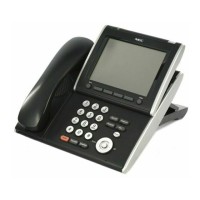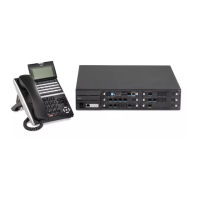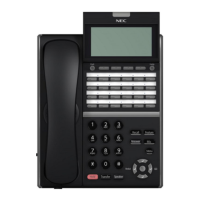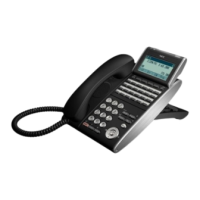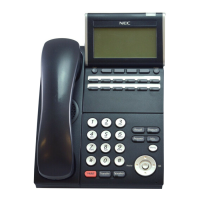934
One-Touch Calling
Description
One-Touch Calling gives a multiline terminal user one-button access to extensions, trunks, speed dial
bins and selected system features. This saves users time when accessing co-workers, clients and
features they use most often. Instead of dialing a series of codes, the user need only press the
One-Touch key. An extension user can have One-Touch keys programmed for:
Direct Station Selection – one-button access to extensions
Station Speed Dial – one-button access to stored numbers (up to 24 digits long)
Speed Dial - System/Group/Station – one-button access to stored speed dialing numbers
Trunk Calling – one-button access to trunks or trunk groups
Service Codes – one-button access to specific Service Codes
An extension user can chain dial with One-Touch Keys. For example, a user can store the number for a
company Automated Attendant in key 1 and employee extension numbers in keys 2~5. The user
presses key 1 to call the company, then one of keys 2~5 to ring the employee to which they want to
speak.
An extension user or system administrator can optionally store a Flash command under a One-Touch
key. This is helpful for One-Touch Keys used as Station Speed Dial bins. The stored Flash may be
helpful to access features of the connected Telco, PBX or Centrex.
Conditions
One-Touch keys provide a Busy Lamp Field (BLF).
When a multiline terminal user is on a call, they can transfer to another station by pressing
a DSS key for that station. It is not necessary to press Transfer to transfer to another
station using a DSS key.
When a multiline terminal user is on a call, they must press transfer to transfer a call off site
with a DSS key.
When a multiline terminal user is on a call, they must press transfer to transfer a call to a
destination that is not a station (/Voice Mail/Department group pilot, etc.).
Pauses can be entered in the dial string of a DSS/One Touch button. The pause is entered
as
P in the dial string and causes the system to wait three seconds before sending the rest
of
the digits that follow the P (pause). Multiple pauses can be entered.
The @ can be entered in the dial string of a DSS/One Touch button. The @ only applies to
ISDN
and Intercom calls. When using the @, the system waits for the destination to answer
(answer supervision), and then sends the rest of the digits.
Entering a P (pause) in a DSS/One Touch dial string can be used for CO calls or after the @
for ISDN calls.
ARS with Max Digits is not supported when entering the @ or a P (pause) in the dial string
of a DSS/One Touch button.
Default Setting
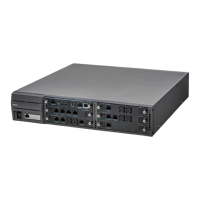
